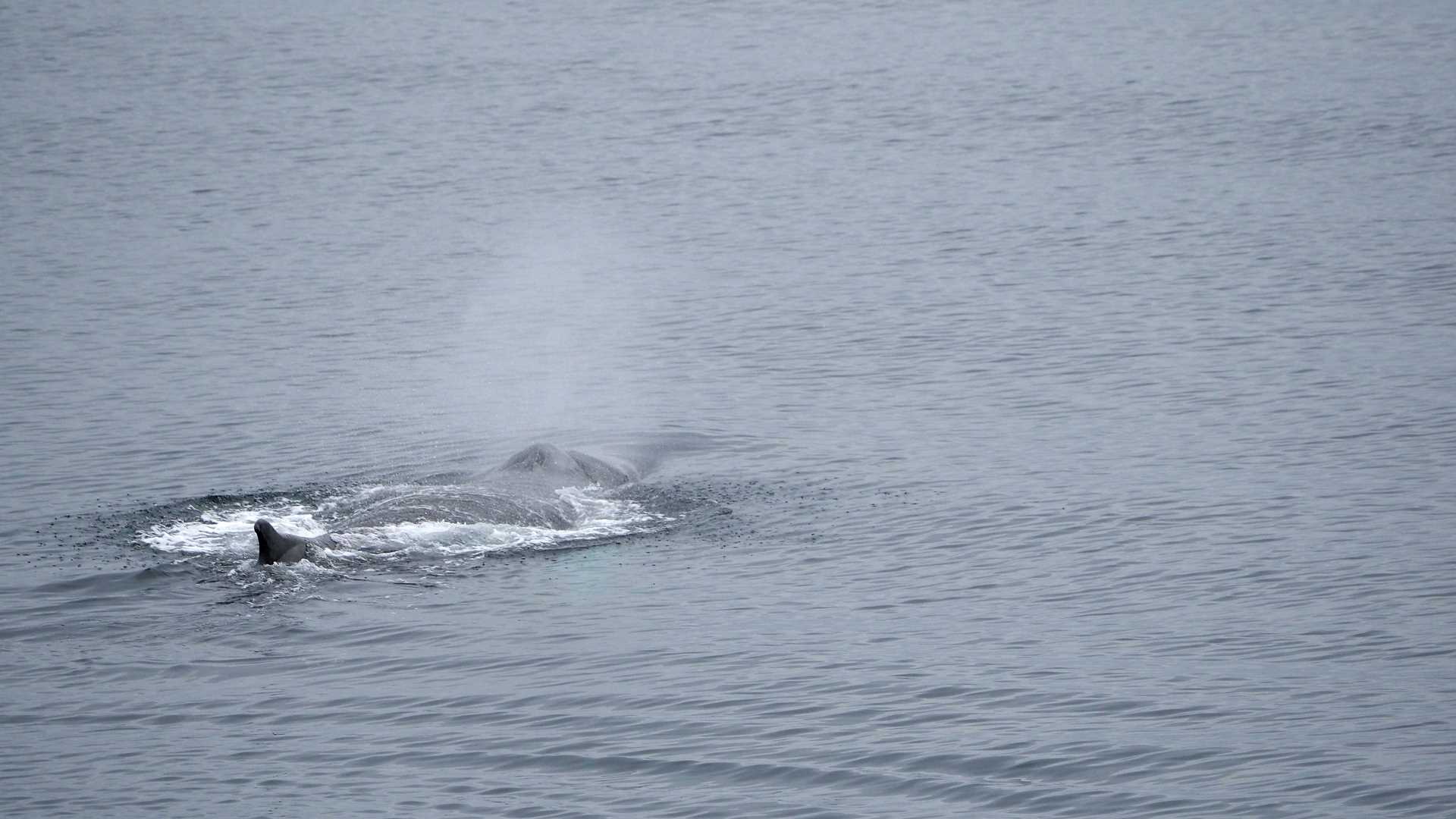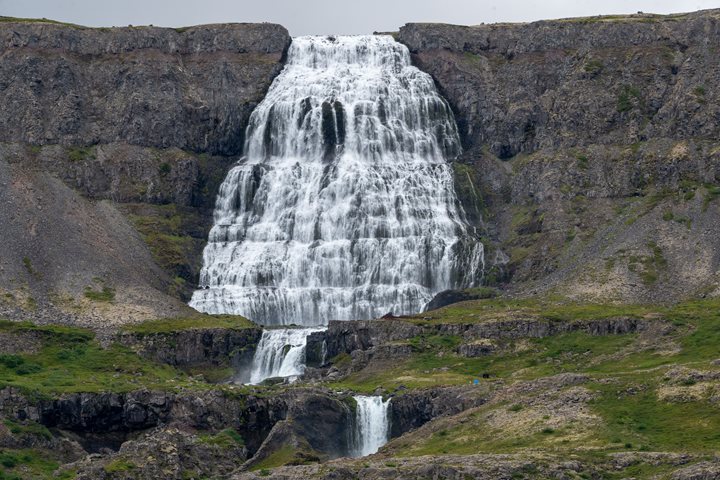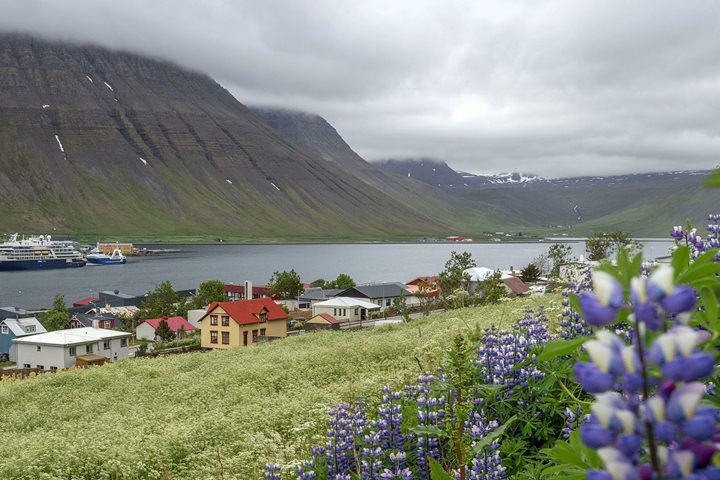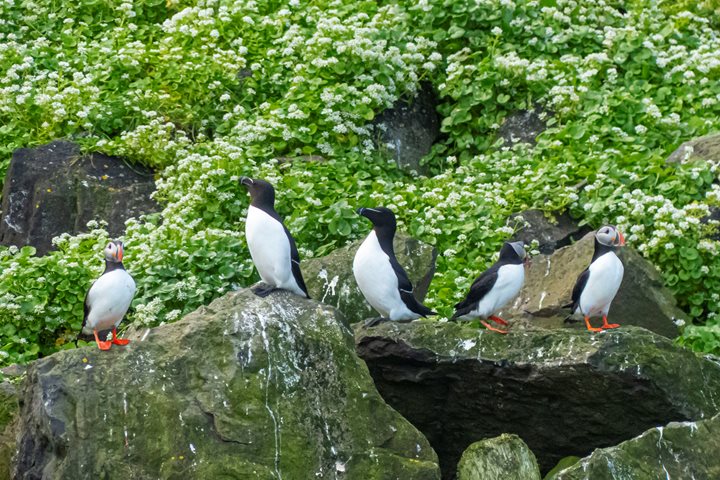After smooth sailing overnight from Greenland, the steep green hills of the Westfjords arose from the dark blue ocean and out of the fog. Iceland!
We were greeted by the bushy blow of whales on our arrival! The low dorsal fin sitting on a hump was particularly noticeable when the whales arching their backs for a dive. Their flukes gave us the species: humpback whales. Humpbacks are fast and active lunge feeders. Their morphology allows them to open their jaws widely and distend their throats to take in huge mouthfuls of water during feeding. They can eat two tons of krill per day.
A few blows, the hump, and occasionally a fluke. At a distance, one was logging and most likely resting. We observed their behavior, our cameras bursting with photos. The sea was flat and calm—perfect for observations. We watched the footprint left from a dive and watched the bubbles rise to the surface, which allowed us to follow the whale’s progress, just few meters off the bow. Slowly, white pectoral fins appeared. It was coming closer and closer. We could see the size of the belly, the grooves in the throat, and the perfect shape of the fins. The whale swam on its back and the pectoral fins were right there, all five meters of them! In a gesture of welcome, it lifted its massive fin and loudly slapped the water right next to us. The strength and power of its slap echoed all around us. Slapping is believed to be a form of communication and the reasons for pectoral slapping can vary, depending on the age and sex of the individuals. What an unbelievable moment!
As the fog began to clear, we sailed to our next destination: Dynjandi waterfall. It’s actually is a tier of seven waterfalls, each with their own name. The uppermost portion is Dynjandi, meaning thunderous, and the original source can be traced upland from the river Dynjandis. Hiking along the coastline to reach the waterfall after arriving by Zodiac gave us an impressive view of the waterfall and surrounding ecosystem with plants much larger than the ones we saw further north. Oyster plant, wild thyme, dwarf birch, and even an heath spotted-orchid were among many we identified.
What a stunning welcome to Iceland!







